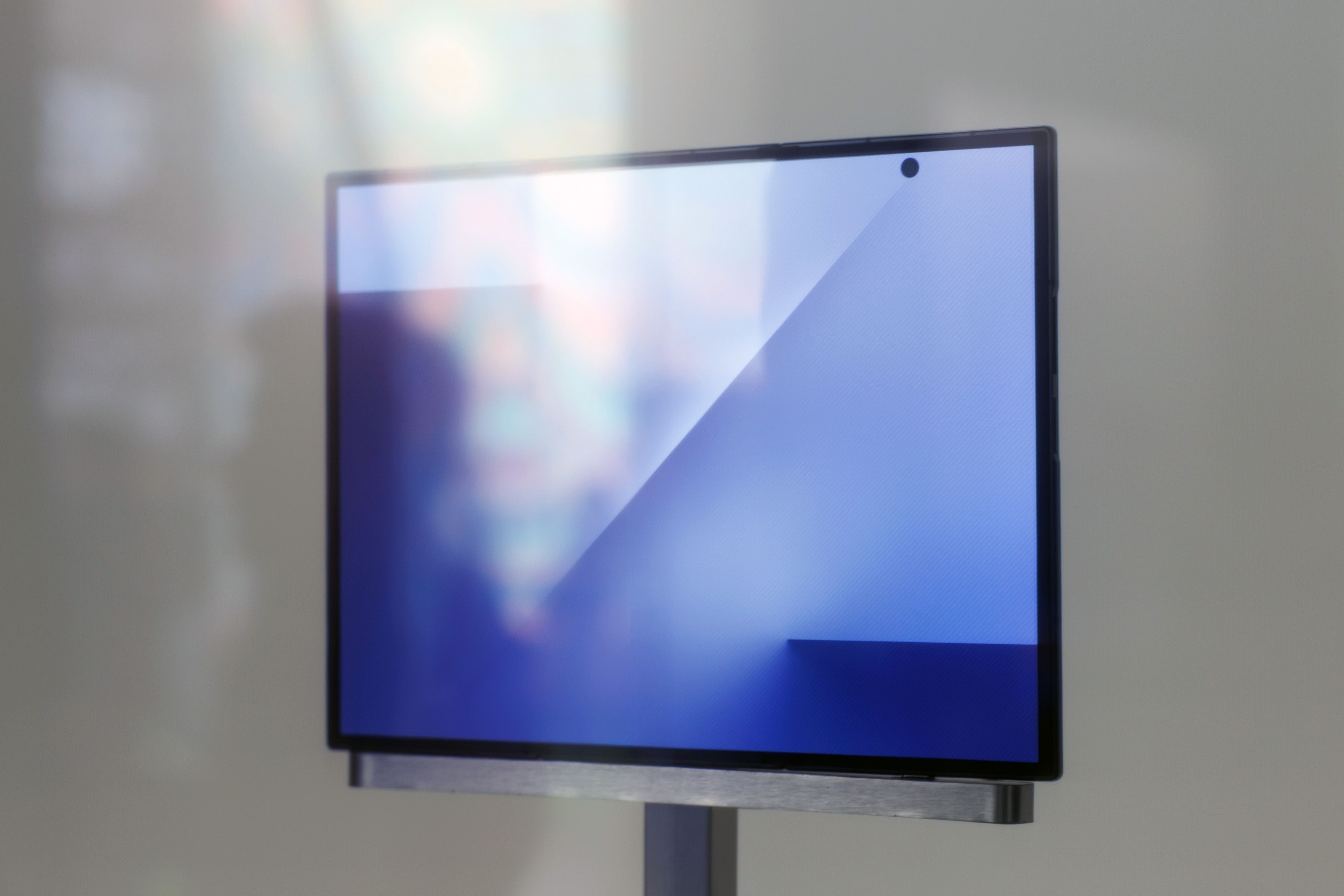Samsung just gave us our first real look at its long-promised trifold phone, displaying the device behind glass at South Korea's APEC summit. While nobody can touch or fold the prototype, this marks the closest we've gotten to Samsung's answer to the Huawei Mate XT - and confirms the company is still on track for a 2025 launch despite keeping mum on final specs.
Samsung finally put its money where its mouth is. After months of promising a trifold phone launch in 2025, the Korean tech giant displayed actual hardware at the Asia-Pacific Economic Cooperation summit in Gyeongju this week. But don't expect hands-on reviews just yet - the device sits locked behind glass, untouchable and unfolded by human hands.
The prototype showcases Samsung's unique approach to the trifold form factor. Unlike Huawei's accordion-style Mate XT that folds outward, Samsung's device folds both sides inward to create what observers describe as a 'G' shape. When fully extended, the device becomes essentially a 10-inch tablet, positioning it as a direct competitor to Huawei's offering that has dominated the trifold space since its launch.
What's particularly telling is Samsung's careful language around the device. The company hasn't even named it yet, and a spokesperson's statement to SamMobile was deliberately vague: 'The recent showcase reflects ongoing R&D efforts, and we plan to bring this next generation device to users within this year.' That phrasing suggests Samsung is still fine-tuning the final product, even as it gets closer to launch.
The timing couldn't be more crucial. Huawei has already moved to a second-generation Mate XT, giving the Chinese company a significant head start in the trifold market. Samsung's Galaxy Z series has dominated the foldable phone space globally, but trifolds represent the next frontier - and Samsung can't afford to cede that ground to competitors.
Industry watchers note this APEC display marks a significant shift from Samsung's previous trifold showcases. The company's display division has shown concept devices at trade shows like MWC 2025, but those were clearly experimental. This APEC appearance suggests Samsung has moved from concept to near-production hardware, even if the final specifications remain under wraps.
The static display strategy makes sense from Samsung's perspective. Foldable phones are notoriously fragile, and trifolds add another layer of complexity with additional hinges and stress points. By keeping the device sealed, Samsung avoids any embarrassing hardware failures while still generating buzz around its capabilities.












